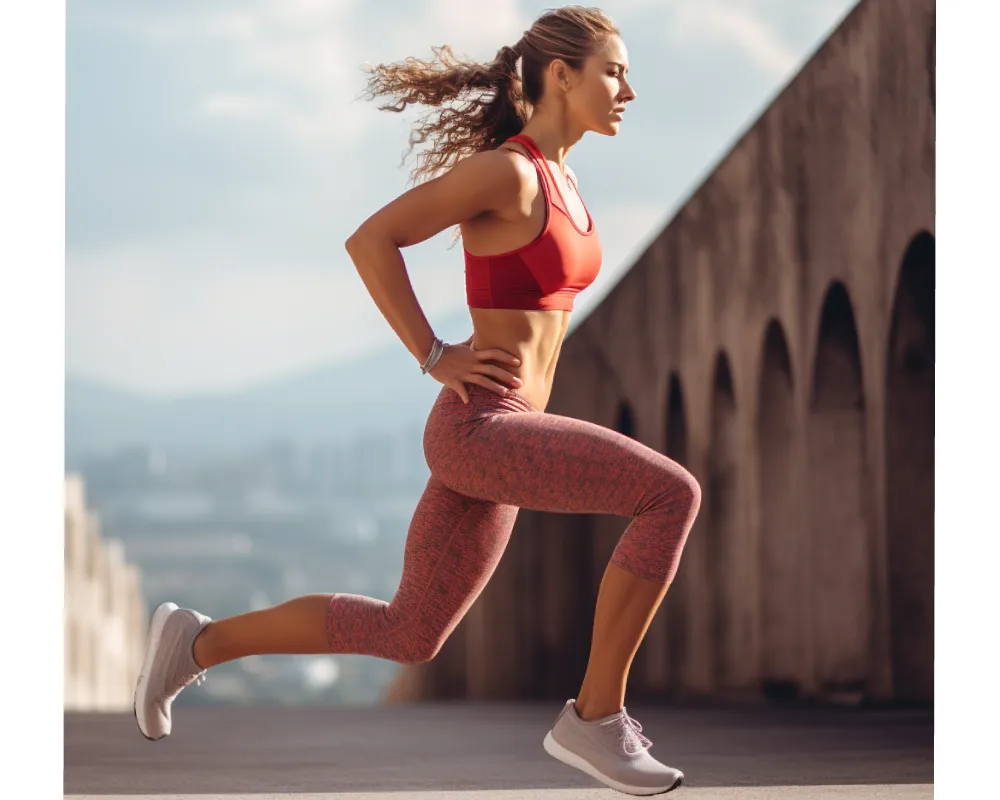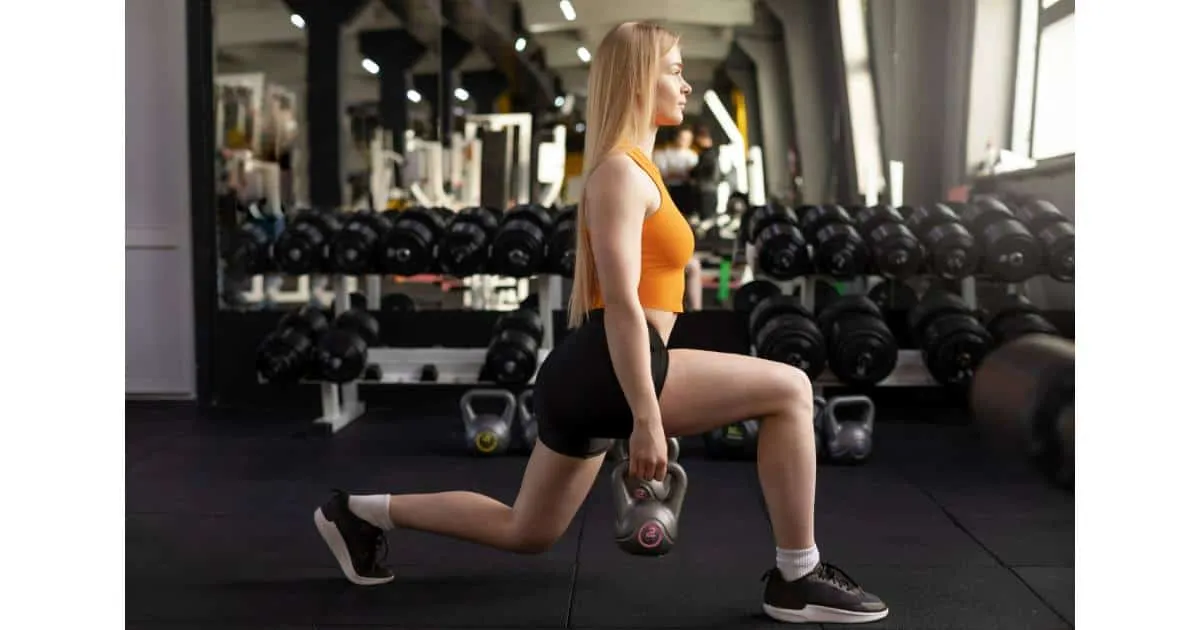If you’ve ever seen a ballerina perform or have watched classic movies, you probably know what a curtsy is and the role it plays. A curtsy is a short and elegant movement where one bends the knees to touch the floor with their hand while bending the other leg and placing that knee on the floor. That said, today we are not going to explain to you what a curtsy is or why ballerinas do it in a performance. You and I both don’t care about that right now. What we are going to explore in this blog post is how you can do a curtsy lunge exercise at home or at the gym! Keep reading if you want to find out more about this great variation of lunges.
What is a curtsy lunge?

A curtsy lunge is a type of exercise that works your lower body, primarily targeting your glutes, quadriceps, and hamstrings. This exercise is perfect for beginners because it’s relatively simple, but it still gives you a great workout. If you want to strengthen your lower body, you really can’t go wrong with curtsy lunges. A curtsy lunge is very similar to a regular lunge, but the difference is that you finish the movement with a curtsy; that is, you end the movement by bending at the knee, placing your other knee on the floor, and “curtsying” as you would with a full-length curtsy. Since curtsy lunges are more difficult than regular lunges, they can provide a greater challenge, leading to more muscle growth. The fact that it’s more challenging is why you should include this exercise in your lower body workouts.
Why do a curtsy lunge exercise?
As mentioned, not only do curtsy lunges tone your legs, but they also bolster knee health and activate your core muscles. This exercise is particularly beneficial for mature individuals, aiding in maintaining fitness and robust knee joints. As we age, our knees often become more vulnerable to injuries, which can put a damper on staying active. However, integrating curtsy lunges into your routine can be a game-changer, as they fortify the muscles around your knees. This builds up knee resilience and helps ward off injuries. Regular practice of curtsy lunges is key to keeping your knees firm and injury-free.
Curtsy lunge vs. regular lunge
Curtsy lunges and regular lunges are remarkably similar exercises, but there are some subtle yet important differences between the two. Both exercises primarily work your lower body, core muscles, and knee health. Curtsy lunges also strengthen your hamstrings and glutes a bit more than regular lunges do. Curtsy lunges also target your upper body a bit more than regular lunges do since you’ll be holding a dumbbell in each hand while performing this movement. Regular lunges, on the other hand, demand you hold your body weight with your arms and legs. A single-leg push done on a leg press machine is an excellent way to improve knee stability while still reaping the strength training advantages of a lunge.
How to do a curtsy lunge?
- Position yourself with your feet as wide apart as your shoulders and your arms relaxed by your sides.
- Shift your weight onto your right foot. Then, step your left foot back and to the side, similar to a curtsy move.
- Your left foot should end up behind and across from your right foot, with your left knee pointed down.
- Now, dip down by bending your knees, making sure your right knee is aligned with your right ankle, and your left knee almost touches the floor.
- Next, push up through your left heel, straightening your right leg to return to where you started. Switch it up and do the same on the reverse side.
- Curtsy lunges rock for working out your bum, front thigh muscles, and back thigh muscles!
You can add weights or not, just go with what suits your workout plan and level. Keep your midsection firm and your spine tall while you lunge. Let’s get moving!
Curtsy lunges with weights
Get ready to boost your lower body power with the fantastic curtsy lunge! Not only does it give your legs a great workout, but your core muscles get in on the action too, making your knees stronger in the process. Now, if you’re up for a bit more of a challenge, why not mix things up with a barbell? That’s right! Swap those dumbbells for a barbell and feel the difference it makes. Just grab that barbell, place it on your upper thighs, and lower yourself into a curtsy, just as you would with your trusty dumbbells. It’s a bit tougher, sure, but oh, the muscle magic it does!
What are the Curtsy Lunge alternatives?
There are plenty of great exercises to shape up your legs and bottom, but deciding where to begin can be dizzying for newbies. If you’re starting, why not go for the basics with classic lunges, or add some flavour with a curtsy lunge? Once you’ve mastered those, try these fantastic moves:
- Regular Squats: Not only are they awesome for your upper legs, hamstrings, backside, and core, but they’re also like the superheroes of workouts.
- Jump Squats: If regular squats seem a bit much, add a spring to your step with jump squats. Squat down, then jump high like you’re reaching for the sky.
- Mountain Climbers: These are great for your lower body and easy on your joints – it’s like climbing a steep hill without moving from the spot.
- Goblet Squats: Want to work your upper body at the same time? Grab a weight, hug it tight, and squat. Your bottom, thighs, hams, and core will be grateful.
- Deadlifts: They’re simple and super effective, targeting your legs, core, and arms all in one.
- Tuck Jumps: Leap high and pull your knees to your chest. These will boost the strength of your legs.
Give these exercises a go and your lower body will be in great shape in no time.
Curtsy Lunges Muscles Worked
The curtsy lunge mainly works out your thigh muscles and your bum. The three parts of your bum muscle are the big, medium, and small ones. Like other types of lunges, curtsy lunges make your bum muscles work hard. They also make your lower leg muscles work. So, when doing curtsy lunges, your thighs and bum are getting the most exercise, but your lower leg muscles get involved too.
Tips and tricks for your first curtsy lunge workout
Begin with a smaller number of reps since these exercises can be tough, even if you’re used to the gym. Always use the right technique to avoid injuries and to get the best out of your workout. Remember to warm up first – it helps stop injuries and means you’ll do better in your session. Go at a pace that suits you; fitness isn’t a race, so don’t worry about what others are doing. Keep your focus on your targets. And don’t ignore drinking water when you’re exercising – staying hydrated is key.
Yoga and Curtsy Lunge Pose
The Curtsy Lunge Pose is similar to the High Lunge Pose (Ashta Chandrasana) and is great for opening up your hips. It stretches the front part of your thigh and shin while improving your balance, strength, and focus. This powerful pose also helps to release tension in your hips, deep core muscles like the psoas, and the front of your torso.
Conclusion
Alright, everyone, here’s the scoop! We’ve dug into the nifty move known as the curtsy lunge – why it’s good for you, how to pull it off, plus a couple of handy hints for your maiden voyage with it. Now it’s up to you to give it your all and be your cheerleader! Real fitness victories come to those who aren’t afraid of a little sweat. This lunge is a champ at working some lesser-used muscles. Take the glute medius – it keeps you steady but doesn’t get much love during standard squats and lunges. Slot curtsy lunges into your leg routine or mix ’em into your total-body blast.
Keep the form in check, though. Got the basics down? Amp it up by adding weights but watch your form – don’t lean too far or your form will take a hit. Also, keep your hips straight to keep those glutes and hips on fire. And if your knee’s trying to steal the show by going past your toes, reign it in to dodge injuries.
